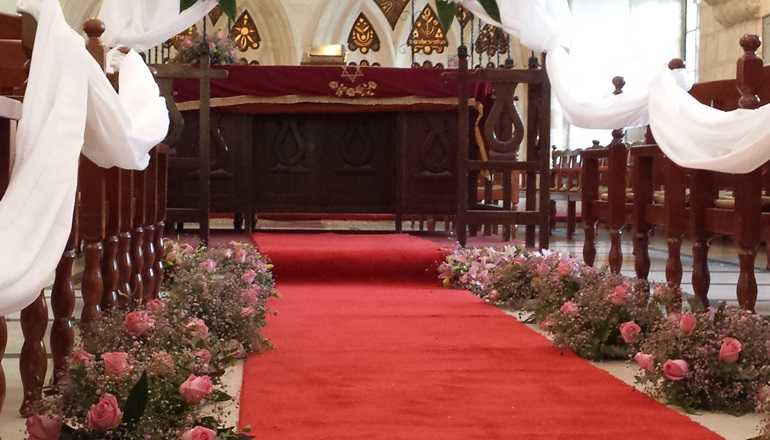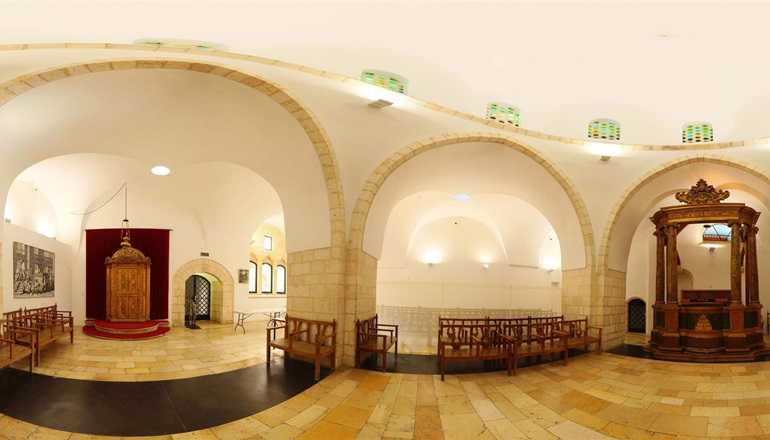About the Sephardic Synagogues
If the Hurva Synagogue persisted as the Jewish Quarter’s central Ashkenazi place of worship throughout much of the 19th and 20th centuries, when it comes to Sephardic synagogues, things were not quite as clear-cut.
In-fact, the main Sephardic house of prayer was a complex consisting of four adjoining sanctuaries: the Yochanan Ben Zakai Synagogue, the Istanbuli Synagogue, the Eliyahu Hanavi Synagogue, and the Emtsai Synagogue.
When the Jewish Quarter fell to the Jordanians in the 1948 War of Independence, the Four Sephardic Synagogues were burnt and subsequently used as horse stables. After Israel recaptured the Old City in 1967, they were restored to their former glory and today continue to serve residents of the Jewish Quarter and visitors to the Old City.
Today, the synagogues also serve as venues for bar mitzvahs, weddings, lectures, lavish banquets and other types of events.
The Yochanan Ben Zakai Synagogue
The Yochanan Ben Zakai Synagogue was erected in the early 17th-century in a Gothic-Spanish motif. Named after one of the founders of the Sanhedrin in Yavne following the destruction of the Second Temple, the site is also thought to be where Yochanan Ben Zakai's midrash (scholarly institution) once stood.
The synagogue hall is particularly significant to the Sephardic community because it was the home of the chief Sephardic rabbi during the eras of Ottoman and British rule in Israel. Recently, it also hosted the coronation of Israel's chief Sephardic rabbi.
The Eliahu Hanavi Synagogue
The Eliahu Hanavi Synagogue is the oldest of the 4 Sephardic synagogues, established in the 16th century as a school for studying Jewish law and was only used for prayer during holidays.
It was named for the prophet Elijah after one day when the congregation was missing a person to complete the quorum, a mysterious stranger arrived to complete the quorum. Believing that the stranger was the prophet Elijah, the congregants named the synagogue after him and have kept the chair he sat in until this very day.
While it was originally Sephardic, the synagogue has been Ashkenazi since the 18th century.
The Emtsai Synagogue
The smallest of the 4 synagogues, the Independent synagogue was built between the others, and it is believed that the space had previously served as the women’s section of the adjacent Yochanan Ben Zakai Synagogue.
According to tradition, the synagogue was built atop a tunnel system that connected the synagogues to the tombs of the kings.
Istanbuli Synagogue
The Istanbuli Synagogue, the largest of the four, was built in the 1760s by the city’s burgeoning community of Turkish Jews. The Emtsai (or ‘middle’) Synagogue was established in the mid-18th century in order to accommodate the rapidly growing Sephardic community.


Bait el 18, Jerusalem
website

Bait el 18, Jerusalem
get directions

website










